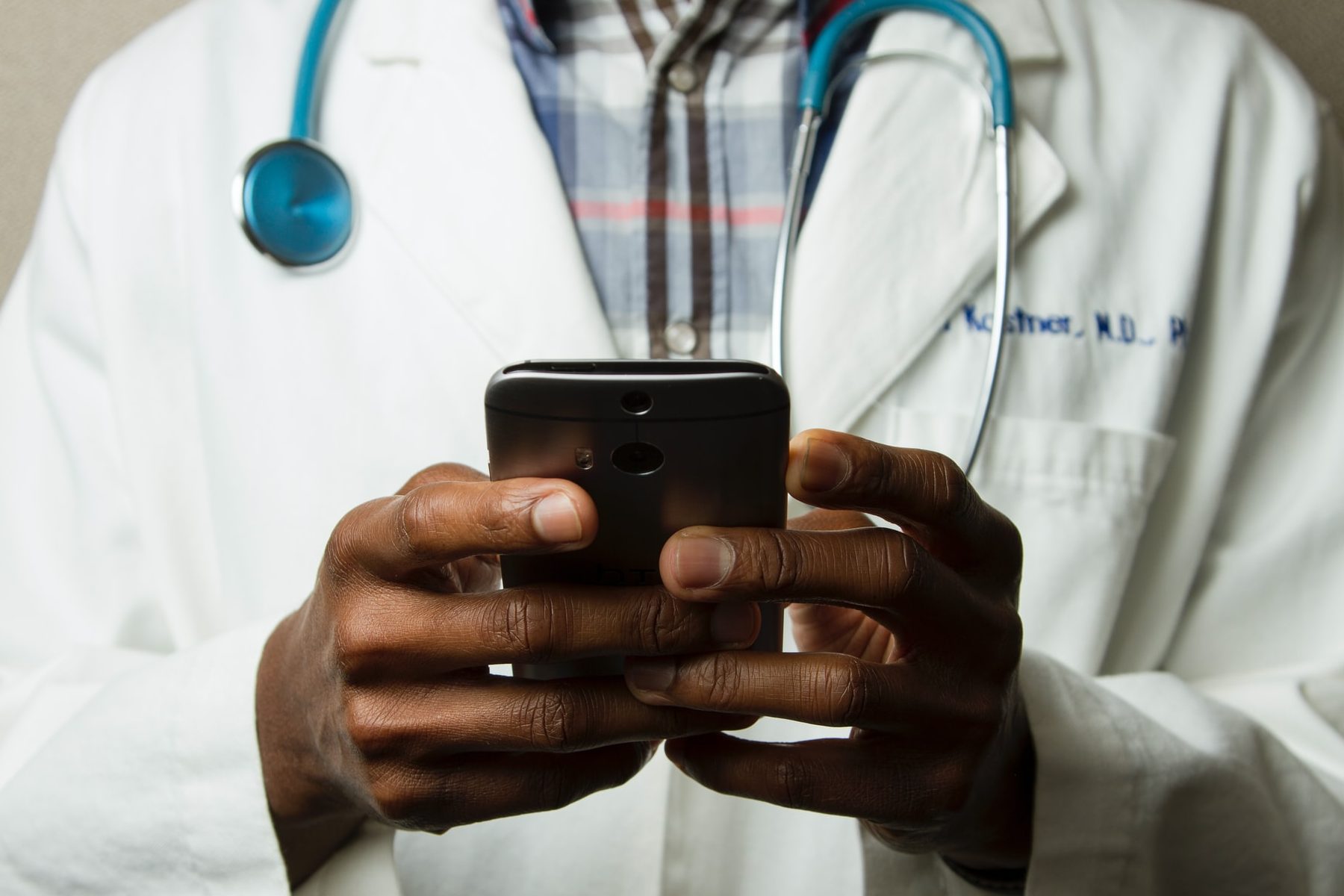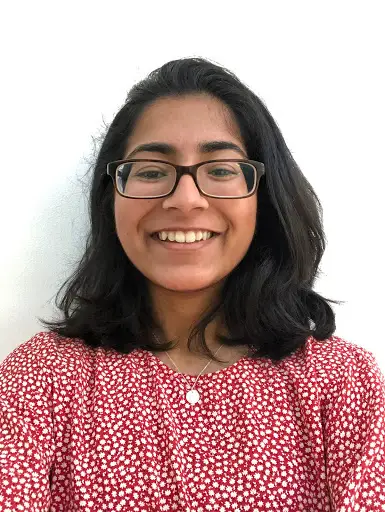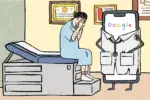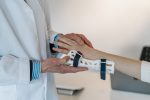The pandemic has completely transformed the operation of healthcare systems in unexpected ways — often to the detriment of patients. Primary care, which includes illness management, disease prevention, palliative care and rehabilitation, is now delivered to patients through telehealth services in many hospitals and clinics across the country. Telehealth is intended to promote public health by minimizing in-person contact, but its success rests on access to the one thing patients need to connect with their doctors — a smart device.
Telehealth medicine allows healthcare providers to remotely evaluate their patients through real-time video calls. These services can be lifesaving, providing a lens through which physicians can screen for symptoms of COVID-19, provide mental health checks and monitor patients’ chronic conditions without fear of transmitting COVID-19.
But telehealth requires a stable internet connection and a smart device with camera and Wi-Fi capabilities, hindering patients’ access to healthcare. Without the ability to visit their doctors virtually, patients who cannot afford smart devices are left to receive crucial healthcare in an emergency room, where they risk exposure to COVID-19. This dilemma holds especially true for minority and low-income communities who are already disproportionately burdened with chronic medical conditions and limited access to medical care.
A Closer Look at the Problem
Widespread social conditions limit the accessibility of telehealth services. Statistics from the Pew Research Center show that while 81% of U.S. adults own a smartphone, that number plummets to 53% for those above the age of 65. According to the Federal Communications Commission, over 19 million Americans lack access to another necessity for video calling — broadband internet access. Even in regions where fixed broadband service is readily available, 100 million people do not subscribe due to factors such as age, education level and income status.
Elderly patients, who face the greatest risk of serious complications from COVID-19, also suffer from chronic conditions that require continuous care from their doctors. The National Council on Aging states that approximately 80% of older adults have at least one chronic illness, and 77% have at least two. This proportion, in conjunction with the proportion of Americans unable to access camera-enabled devices, leaves a gaping hole in the delivery of telemedicine at a time when comprehensive healthcare is needed most.
Although Medicare and many other insurance policies have expanded to include coverage of telehealth services, few programs address this lack of access to technology that’s causing barriers in healthcare. Patients like Earl Egner, an 84-year-old diabetic and cancer survivor with no computer or smartphone, are left to communicate with their doctors over the phone.
But Egner’s physician, Dr. William Fox, explained to U.S. News that video adds an important dimension to virtual visits.
“Telephone-only visits are better than no visit,” Fox said. “But a lot of helpful information can be gleaned from eyeballing the patient, even if it is via computer monitor.”
TeleHealth Access for Seniors and Their Solution
At the height of the pandemic in March, a group of students at Yale University witnessed the consequences of these disparities in access to primary care; they decided to do something about it. Soon afterward, TeleHealth Access for Seniors, a 501(c)(3) non-profit that donates smart devices to clinics serving low-income and elderly populations, was born.
“We started this organization to help patients in need. We firmly believe that demographic factors, like age or income, should never determine one’s access to a basic human right,” said co-founders Aakshi Agarwal, Hannah Verma and Arjun Verma on the organization’s website.
TeleHealth Access for Seniors operates on a simple model. Virtual volunteers collect lightly used devices from their local area and fundraise to purchase brand new tablets. Devices are then sanitized and dropped off to partner clinics that serve patients in need. If they encounter any technical difficulties, patients can access device set-up guides and tech support services provided by the organization. Beyond virtually interacting with their physicians, patients can also use their devices to connect with their loved ones and overcome the effects of social isolation.
The donated devices can even serve purposes not related to the pandemic. Elaine Johnson, the education coordinator at Cavalry Women’s Services in Washington D.C., said that women at the shelter have also used donated devices to complete online courses, attend meditation classes and participate in bingo.
And this process works. TeleHealth Access for Seniors has now raised $70,000 and donated 1800 devices to 92 partner clinics across 26 states. The organization that started with a small group of college students has expanded to 315 volunteers who are determined to serve the needs of their communities.
“From an [Emergency Department] doc who has seen otherwise healthy people who are at risk of catching coronavirus come into the ED just because they cannot see their normal doc and don’t have the technology to see their doc virtually — this is a truly important project and I am glad people are working on it,” wrote a physician on the organization’s social media.
My Experience With TeleHealth Access for Seniors
As TeleHealth Access for Seniors expanded their reach across college networks, I caught wind of their cause from my university’s pre-health listserv. The opportunity to serve my community of Long Island — a region hit hard by the pandemic — came at a time when each morning, I helplessly read the traumatic headlines of the devastation wreaked by COVID-19. Seeing people my own age enact meaningful change in their local communities spurred me to do the same.
I was soon scouring my basement for old devices, texting friends and family members for donations and writing grants to serve a clinic 20 minutes from my house. Along with my fellow Long Island volunteers, I eventually raised enough money to donate 12 tablets to Family Health Centers of Long Island. And it was the most gratifying experience of my quarantine. I felt proud to know that my efforts could ease the lives of a dozen patients in my own community, and that I could add meaning to an otherwise overwhelming time.
How You Can Help
The benefits of telehealth services suggest that they’re here to stay, even after the pandemic fades away. Experts say virtual visits increase patient compliance, as well as eliminate the need for patients to take time off work or pay transportation fees to go to the doctor’s office.
If you’ve been convinced of the need to help support patients’ access to telehealth services, here are a few ways that you can help.
Have an old camera-enabled device lying around? Donate it using a quick Google form, and a volunteer will get back to you with the next steps.
Want to volunteer your time to collect devices and fundraise in your area? Email our new volunteer coordinator at abe.baker-butler@telehealthforseniors.org, who will get you set up to join our organization.
Have a few spare dollars to donate toward purchasing new devices for patients? Donate what you can to our GoFundMe.
Whichever way you choose to contribute, you will be changing a patient’s life.
As a physician wrote on social media, “I have tremendous faith in the future of our world, knowing your generation is conceiving and then executing projects like this. I’m very proud of you all.”

















